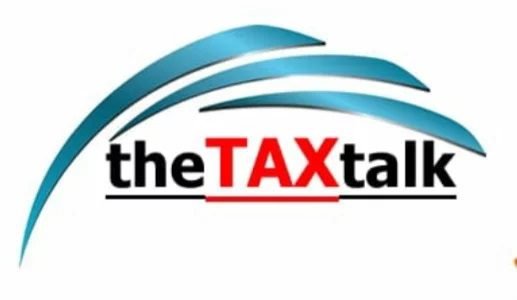![]()
Tax Implications of Receiving Property in Exchange for Relinquishing Tenancy Rights
Query 1]
I was managing a big commercial property of a relative for the past 40 years and was also running my business from a small office in the same premises. The relative entered into an agreement to sell for the same property with a builder. We entered in a tri-party MOU wherein it is specified that due to services rendered and for relinquishment of tenancy rights, I shall be given a similar portion in worth, around Rs. 2 Cr in the newly constructed building without consideration. Please advise tax implications. Will it attract LTCG? If yes, how much will be the tax amount? What is the mode to save tax? What should be taken as the cost of acquisition? Is it a reckoner value? Alternatively, whether the tax will be applicable only when I sell it? At present, I want to retain it for business.
Opinion:
The taxation on relinquishing tenancy rights either against cash or against exchange of equivalent value of property is always an interesting issue. The transaction of surrender or transfers of tenancy rights give rise to capital gain taxation. Let us know more about it:
1. Capital Gains Tax (CGT): Not All Gains Are Without Pain:
Under Indian Income Tax law, the relinquishment of tenancy rights is treated as a “transfer” under Section 2(47) of the Income Tax Act, 1961. Consequently, the value received for this transfer—whether in cash or in kind—is subject to Capital Gains Tax (CGT). Since the rights were held by you for over 40 years, this would qualify as a Long-Term Capital Gain (LTCG).
2. Calculation of Capital Gains:
To compute LTCG, the following components are relevant:
(a) Full Value of Consideration:
The “consideration” received in your case is the value of the newly constructed property (Rs. 2 crore) that you are entitled to. Since this property is being given to you without monetary consideration, the market value of the property will be treated as the “full value of consideration” for calculating LTCG. The reckoner value (circle rate) of the property may come into play if it is higher than the consideration stated (Rs. 2 crore).
(b) Cost of Acquisition of Tenancy Rights:
In many cases, tenancy rights are acquired without an identifiable purchase cost, particularly if the tenancy was inherited or obtained long ago. As per judicial precedents and Section 55(2)(a), in such cases, the cost of acquisition of tenancy rights is deemed to be NIL. Therefore, the entire value of consideration (Rs. 2 crore) would be treated as capital gains. In your case, the tenancy has a holding period of more than 2 years and so it will be reckoned as Long Term Capital Gain (LTCG).
(c) Cost of Improvement:
If you have incurred any capital improvements on the tenancy rights over the years, those costs may be deducted from the full value of consideration. However, such cases are rare with tenancy rights.
3. LTCG Tax Liability:
The LTCG will be calculated as follows:
LTCG=Full Value of Consideration−Cost of Acquisition− Cost of Improvement (if any). Since the cost of acquisition is NIL and there is likely no cost of improvement, the LTCG in your case will be approximately Rs. 2 crore.
4. Tax Rate:
For LTCG, the applicable tax rate is 12.50% plus applicable surcharge and cess.
[It may be noted that the LTCG tax rate has been reduced to 12.50% if the transfer of capital assets is there after 23rdJuly 2024 and no benefit of indexation is available in such a case. Further, the choice of paying the tax at lower of 20% with indexation benefit or 12.50% without indexation benefit is available only if the asset transferred is land or building and is not available if the tenancy rights is transferred.]
5. Tax-Saving hack: Because Who Doesn’t Like a Discount?
You can sidestep some of this tax by exploring exemptionunder section 54F which requires investment of the full value consideration. For exemption, section 54F rules are as under:
a) Invest the sale proceeds in a residential property.
b) Do this within two years (purchase) or three years (construction).
c) You should not be the owner of more than one other residential property at the time of LTCG income.
[In your case, it is not mentioned whether the property worth Rs. 2 Cr which you are getting is a residential property or a commercial property. If it is a residential property, the same may be eligible for exemption U/s 54F and you need not purchase any other house property in such a case].
6. Tax Applicability on Retaining the Property:
If you retain the property for business purposes and do not sell it immediately, the LTCG tax will still be applicable. This is because capital gains are triggered at the point of transfer, regardless of whether the consideration is retained or reinvested.
7. Cost of Acquisition of the New Property:
For future tax implications, the cost of acquisition of the newly received property will be treated as its market value (Rs. 2 crore) at the time of receipt. This will serve as the base value for calculating capital gains when you eventually sell the property at a future date.
Key Takeaways
Above query is a perfect reminder that even “free” properties come with hidden price tags – mainly in the form of tax liabilities. But with some smart reinvestment moves, you can turn the tables and reduce your tax bill. So, whether it’s a residential retreat or a commercial cash cow, plan wisely and let your newfound wealth work for you.
[Views expressed are the personal view of the author. Readers are advised to seek professional advice before taking any decisions. Readers may forward their feedback & queries at nareshjakhotia@gmail.com. Other articles & responses to queries are available at www.theTAXtalk.com].


